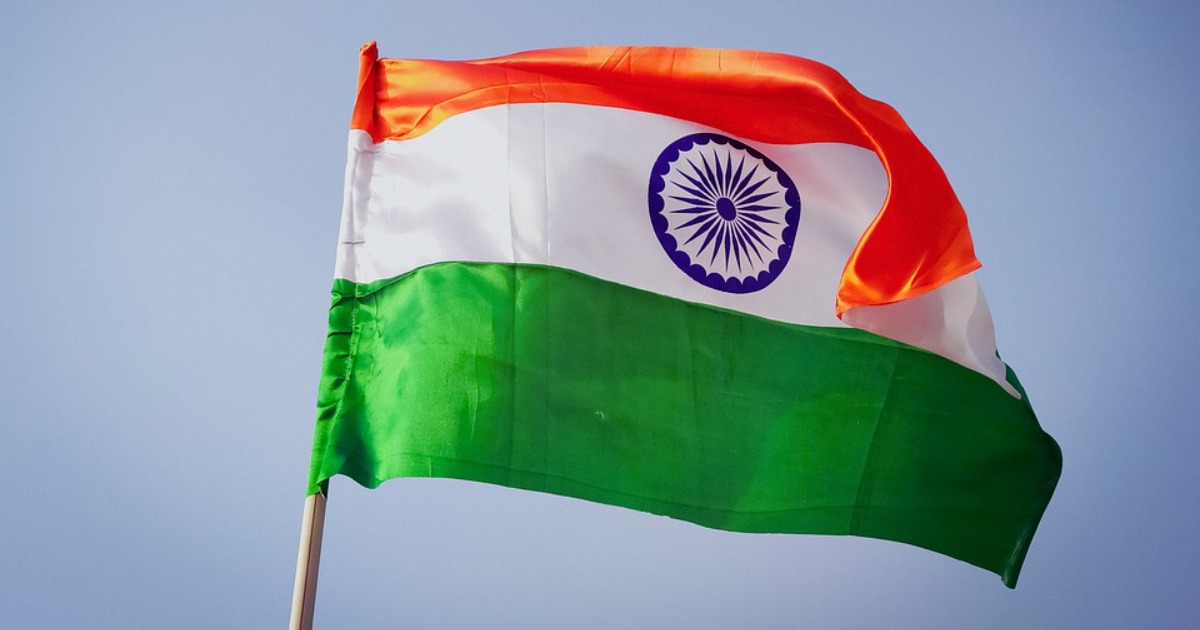India and China: 1962 as a Turning Point
A history retold about India and China from 1949 to 1962, a formative and yet self-destructive phase in a troubled relationship.
November 30, 2021

In the mid-20th century, India and China began to craft a diplomatic relationship that aimed at peaceful coexistence between two very different political systems—one a constitutional democracy built on the principles of pluralism and respect for diversity, and the other Marxist-Leninist and authoritarian.
Short lived friendship
The relationship of so-called brotherly friendship they built in that pioneering phase was short-lived.
It foundered on the rocks of a boundary dispute that exposed the relationship’s critical flaws and its brittleness—both of political vision and policymaking—and the differences between their top leaderships in character, personality and experience.
A troubled relationship
This is a history retold about India and China in mid-century from 1949 to 1962, a formative and yet self-destructive phase in a troubled relationship.
Today, as differences and tensions have resurfaced between India and China—particularly after the tragic events in the Galwan Valley of India’s Ladakh—a wide-angle perspective of the early history of India-China ties is needed.
We need to understand how those fateful years influence thinking on the disputes that complicate the relationship to this day, is needed.
Contemporary challenges
A more textured understanding of the complex past in India-China relations can also prepare us for the challenges that confront the Indo-Pacific region today, consonant with China’s rise.
India’s bitter memories of the conflict with China of 1962 are often the sole touchstone for the nation’s flashback to the history of this period. Blame for India’s defeat by China is easily apportioned, with Jawaharlal Nehru, independent India’s first Prime Minister, being the chief accused.
The importance of understanding historical complexity
But history should be envisioned with the aim of understanding the complex warp and
weft of its fabric, and not through simplistic deduction if it is to be of value to the course of negotiation of outstanding issues in relations with China.
Why did India and China stumble into war in 1962? The so-called follies of Jawaharlal Nehru, a lead actor in our story, cannot be the simple or default answer, our textbook gospel.
Nehru as the central player
The answers are complex. History should not burden policy but should provide it with ballast.
The India-China relationship in its mid-20th century phase was a history of politics, of ideologies, of the disposition of leaders and a history of diplomacy and war.
Nehru’s vision of China
No doubt, it is dominated on the Indian side by Jawaharlal Nehru, whose mind was inspired
by those pioneering voyagers in millennia past, both Indian and Chinese, who reached out across deserts to build a partnership of civilizations.
What propelled Nehru’s vision of China? He saw China as this emergent nation ready to shake off the clutter of backwardness and foreign subjugation and the shackles of the past. As a potential best friend and a geo-civilizational ‘equal’ to India.
Responsible stakeholder?
For Nehru, India and China could together be that mid-20th century definition of an independent force in world politics, unhitched to east or west.
India, Nehru held, would bring China to the global stage so that it would become a responsible stakeholder in world politics.
It was a lofty aspiration, and India would feel betrayed when she saw her goodwill as inadequately reciprocated—even spurned—by China, as the relationship unraveled.
Honor and emotions
Where national honor is at stake, emotions run high. The national humiliation resulting from the 1962 conflict with China haunts India’s national consciousness.
China continues to be the adversary (a term that is synonymous with enemy, after the Galwan Valley killings of June 2020.) It’s alignment with Pakistan and now-established economic and military resurgence are seen as posing a clear and present danger to India’s national security and sovereignty.
Maps and stories
Stories cut across maps. Map lines are complex and convoluted because they involve
contested domains and histories, competitive statecraft and token expressions of coexistence.
Tibet and Beyond
The events post-1950 in Tibet had profound implications for the Himalayan frontier zones of India.
In those early years of these first encounters between two newly-minted independent nations, the border zones along their shared frontiers were still the scenes of many crossings, seasonal migrations and were braided together by closely-linked trading communities.
India’s connections with Xinjiang and Tibet were still a living bond, though soon to be weakened and slowly severed by the entry of Communist China into both regions.
Cartographies of National Humiliation
For countries like China, the “cartography of national humiliation” signifies borders imposed by foreign interference and machinations seen as taking away the Chinese people’s birth right.
Similarly, in India, events like the Partition took away from the country’s sacred “geo body” and to contemplate a similar loss of territory through boundary settlements with neighboring countries in an electoral democracy bound by nationalistic public opinion, is anathema.
Shared sense of victimhood
China and India are seen also as affected by a sense of “victimhood,” saying that they are victims of imperialism and that they are claiming boundaries that have always been sacrosanct parts of their nations, historically.
There was a huge chasm between each country’s approach to the problem. The Chinese case was that a boundary line had no validity if it was not jointly surveyed, described or negotiated. In other words, it was formally delimited.
In contrast, for India, the traditional limits were absolutely clear and unambiguous and publicly affirmed on an official map.
No bridge-building possible
There were also constitutional obstacles in India’s democratic framework that disallowed any modification of such boundaries.
When officials of the two countries met on the direction of their Prime Ministers in 1960 to exchange documentary evidence on their respective cases on the boundary dispute, it was clear that differences could not be bridged at all.
The area of darkness
A settlement of the “outstanding boundary question,” which is the terminology used by Indian diplomats over the years and is the “area of darkness” in the relationship, eludes both countries.
The border discussions have stretched on for close to four decades now, excluding the primary iteration before the 1962 conflict.
It is the old story of the immovable object meeting an irresistible force. Which is Communist China and which India, is anybody’s guess.’
The centrality of Tibet
India’s closeness to Tibet, dictated not only by geography but ties of religion, pilgrimage, trade and cultural osmosis, makes the India-China relationship a three-body problem.
In many ways, if a subaltern history of India-China ties is to be written in the future, it should center on a significant minority—the Tibetan people and their lost voices.
The willful and deliberate dissociation of the subject of Tibet, and her status, from the issue of India’s frontiers with Xinjiang and Tibet by the policymakers in Delhi, once China entered Tibet in 1950-51, was an ill-conceived move. The wages paid for that dissociation have yielded little benefit for India.
Back then – and today
Today, the impending issue of the succession to the 14th Dalai Lama (who received asylum in India in 1959 and has lived there since then) gives the Tibetan factor in India’s relations with China a continued saliency.
So does the presence of a large community of Tibetan refugees in India and the presence of the Central Tibetan Administration—often seen as a government-in-exile—in Dharamshala in Northern India.
The ageing Dalai Lama
As relations with China deteriorate, democracies like India and the United States (which also hosts several Tibetan refugees) will need to focus on how the identity of the Tibetan people as a distinct religious and cultural community, struggling to keep this identity alive, can be safeguarded and fostered.
The current Dalai Lama is advancing in years. And China is increasingly asserting her ‘right’ to name a suppliant successor while clamping down further on the human rights of Tibetans and their communication links with the outside world.
Lessons learnt about China
The “lessons” learnt about China by the United States in the last decade, that a long engagement would not necessarily induce a change in the intrinsic nature of Chinese politics, systems and statecraft, recall the experiences of Nehruvian India.
They are reminiscent of the failures of policy founded on best intentions.
The complex Indo-Pacific equilibrium
Great power competition and a complex Indo-Pacific equilibrium are the order of the day.
Today, as India and the United States forge a partnership much closer and developed than at any period in their history, a deeper understanding of India’s troubled history of bilateral relations with China is necessary.
This includes a closer analysis of why the oldest territorial dispute in modern history has persisted across a land border close to 4000 kilometers.
Such problems present no easy solutions. This makes both the land and maritime environments of the Indo-Pacific extremely unstable and riven with fault-lines.
Coalition Building needed
The close alignment between the United States and India today has the implied acceptance, even if it is unsaid, of the need to build a coalition.
This coalition needs to be better prepared to withstand the threat posed by China in an Asia whose environment is a disturbed one.
What we need to build is an equilibrium that provides reassurance to the smaller nations of Asia that it will not be smooth sailing for the Chinese as they push their well-resourced and well-endowed plans for a Sino-centric world order.
Conclusion
By this reasoning, a many-faceted awareness of history is an essential requirement, because India’s own place in the world, her democratic systems, her economic strengths and her strategic position in the Indo-Pacific world, dictate the need for such an understanding as we set our compass towards the future.
Takeaways
For countries like China, the “cartography of national humiliation” signifies borders imposed by foreign interference and machinations seen as taking away the Chinese people’s birth right.
In India, events like the Partition took away from the country’s sacred “geo body” and to contemplate a similar loss of territory through boundary settlements with neighbouring countries in an electoral democracy bound by nationalistic public opinion, is anathema.
China and India are seen also as affected by a sense of “victimhood,” saying that they are victims of imperialism and that they are claiming boundaries that have always been sacrosanct parts of their nations.
It is the old story of the immovable object meeting an irresistible force. Which is Communist China and which India, is anybody’s guess.
India’s closeness to Tibet, dictated not only by geography but ties of religion, pilgrimage, trade and cultural osmosis, makes the India-China relationship a three-body problem.
Today, the impending issue of the succession to the 14th Dalai Lama (who received asylum in India in 1959 and has lived there since then) gives the Tibetan factor in India’s relations with China a continued saliency.
As relations with China deteriorate, democracies like India and the US (which also hosts several Tibetan refugees) will need to focus on how the identity of the Tibetan people can be safeguarded.
As India and the United States forge a partnership much closer and developed than at any period in their history, a deeper understanding of India’s troubled history of bilateral relations with China is necessary.
The close alignment between the United States and India today has the implied acceptance, even if it is unsaid, of the need to build a coalition.

